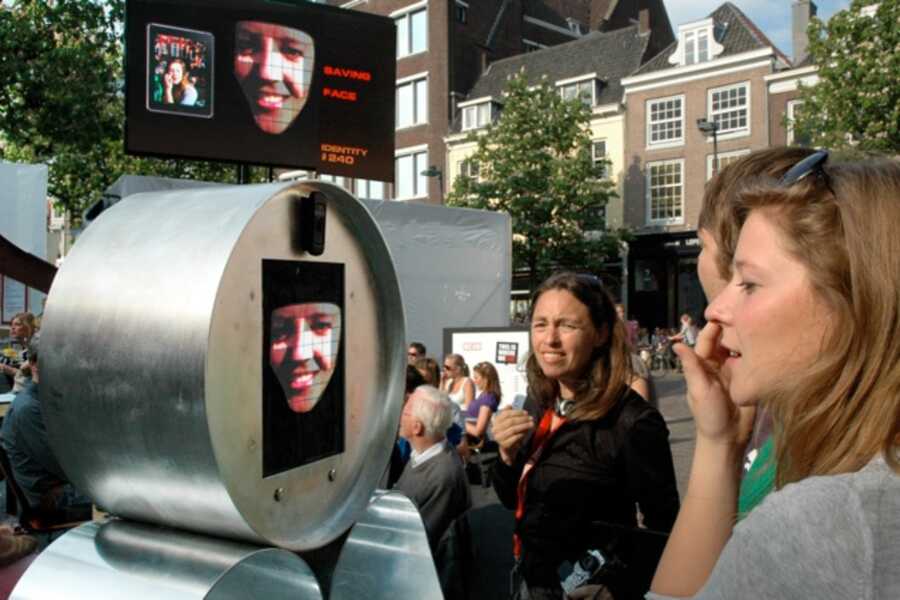YOUR FACE AS A TANGIBLE SOCIAL INTERFACE
In ‘Saving Face’ you make your face visible on a big screen by touching your face.
By caressing your own face you ‘paint’ your face on a large electronic screen. On the screen your face appears and merges slowly with the portraits of previous visitors. Your merged portrait on the screen shows a temporary identity - further transforming through every face-caressing act. Together you compose new, temporary, non-tracable, and non controllable networked identities.
‘Saving Face’ is a meeting place in dynamic public spaces such as museum hall, city square. Each portrait is saved in a growing database. Travelling to various geographical and cultural contexts, the project connects different personal historical and cultural backgrounds in a playful way. ‘Saving Face’ can also be a ‘Love-app’, for lovers to melt together on the urban screen by caressing each others faces.
And on an interactive urban screens network, participants in various cities worldwide can tele-touch each other to meet.
LANCEL AND MAAT:
“When scanning and defining our identity and social trust, our sensory abilities are increasingly replaced by social mediaand privacy filters. We use networked surveillance and identification technologies. However, many philosophers and social scientists state that touch, face to face connection and body language are core components for trust and reciprocity– which are the foundations of social structures. There is an urgent need for research in embodied trust interfaces to create social and economical sustainability. In ‘Saving Face’ we create a meeting ritual, in which ‘caressing’ is a form of ‘scanning’. It is meeting process in which we meet online - by physically touching.”
TECHNICALLY,
SF is an innovative montage of physical/virtual interaction concept, including networked communication technologies and Face Recognition,
to create a lively city meeting place.
'Saving Face' can also play on a network of interactive urban screens.
SavingFace in Utrecht


